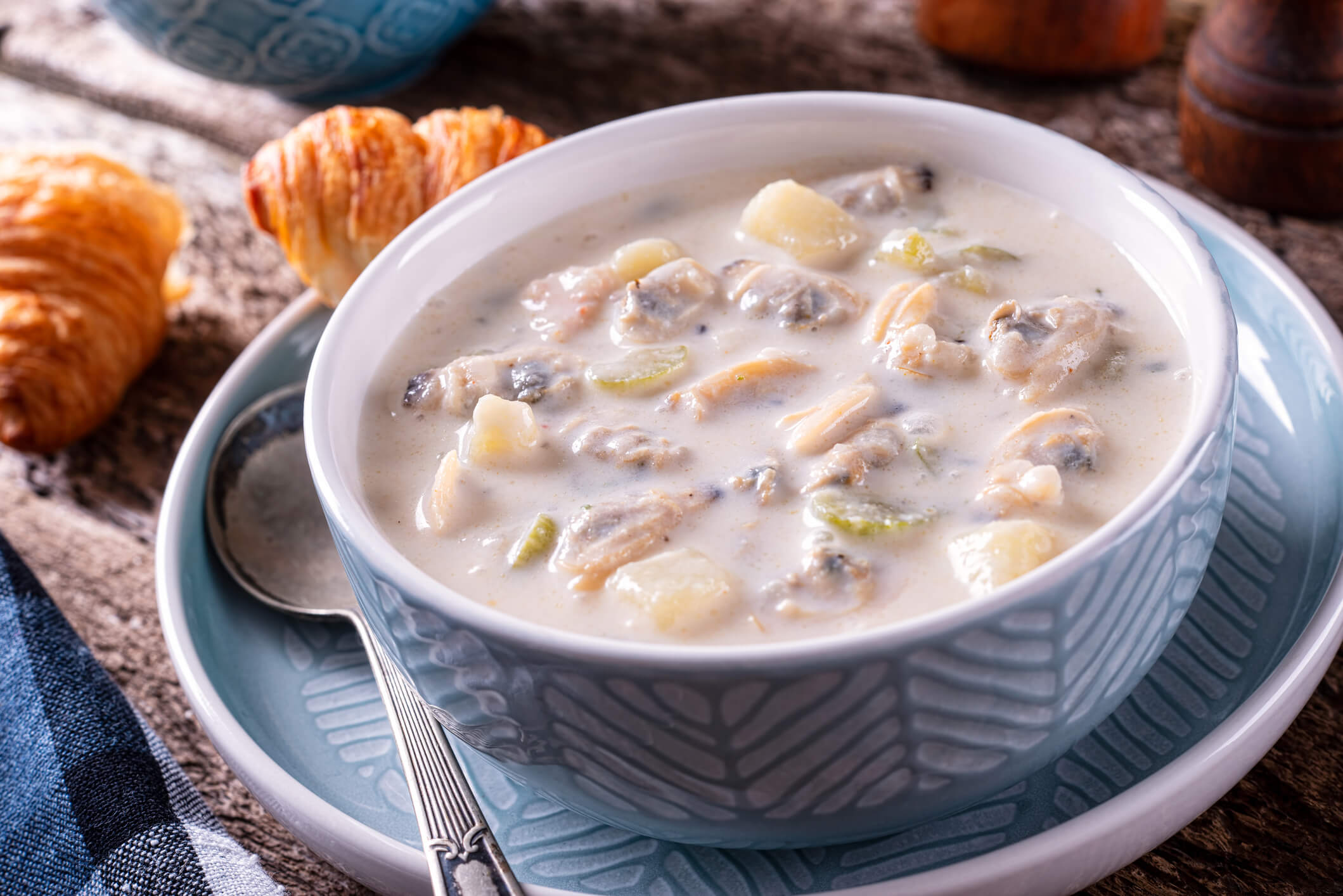Perfecting A Homemade Clam Chowder
One of the most popular and delicious New England delicacies is a cup of clam chowder. But if you don’t live on the East Coast, it can be hard to come across a decent bowl of chowder. Sometimes the broth is too thick, while other times the clams still have bits of sand leftover on them. To truly enjoy clam chowder, sometimes you have to perfect it yourself. Online culinary school can help you sharpen your seaside cooking skills so your chowder comes out just as perfectly as you had imagined. Here are a few tips to get you that authentic New England taste:
Choose your pork wisely
Most bases of clam chowder calls for a rendering down of some form of salted pork, which is salted and cured unsmoked pork fat and meat. Look for a salt pork with an equal mix of fat and lean to make sure it doesn’t turn too soft in the chowder.
Look for Quahog clams
These are the largest type of clams, sometimes weighing a half a pound or more. These clams work especially great for chowder because their big size makes them easy to process. If you’re using fresh clams, the best cooking method is to steam them by adding a bit of plain water or clam juice to the pot. Once they pop open, drain their liquid into the pot, remove the flesh with a spoon and chop it. The trick to avoiding rubbery clams? Save them for the end. Transfer them to a strainer over a bowl to collect any juices that drip, and dump them into your pot during the last minute or two of simmering. Be sure not to overcook them, even by 30 seconds.
If you don’t have the option of using fresh clams, you can use canned or frozen chopped clams. In fact, many restaurants that make great chowder use the very same clams. Clam juice is also a great way of incorporating flavor, even when you do have the fresh clams.
Opt for red potatoes
The type of potato you choose for your chowder can make or break the dish. Look for red potatoes, which are lower in starch and won’t bleed into the chowder.
Back to basics
Stick with traditional flavorings for your broth, like onions, bay leaf and celery. Alternatives like carrots, leeks and garlic can be used, but many like a classic taste. The sweetness of carrots can add an accent that doesn’t belong in a chowder.
Thicken properly
A clam chowder with a very thin base isn’t what you’re looking for. You have to thicken it up by using a roux-based option. Roux is a mixture of flour and butter and acts as a thickener.
Explore and master traditional and regional soups with an online culinary arts program from Escoffier.


